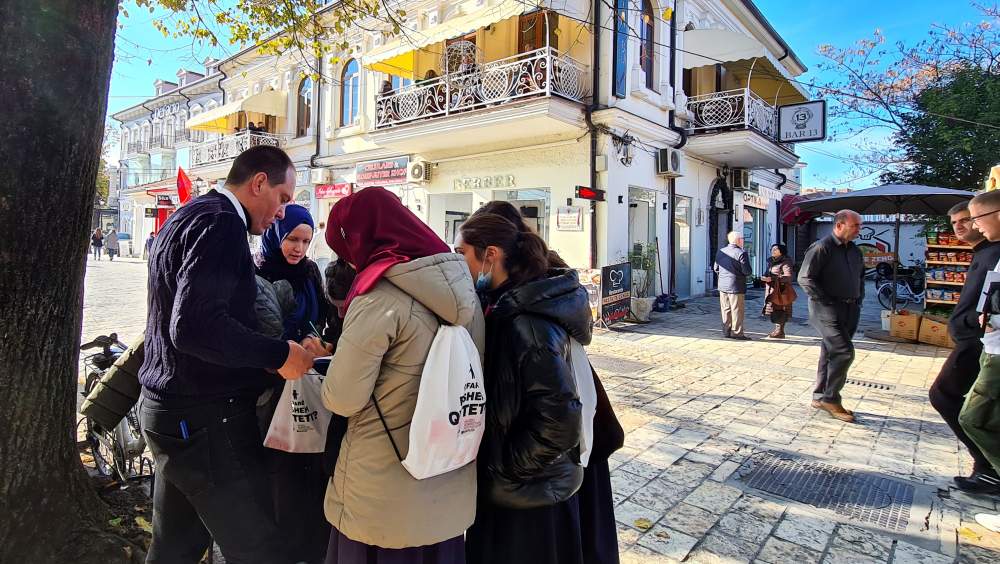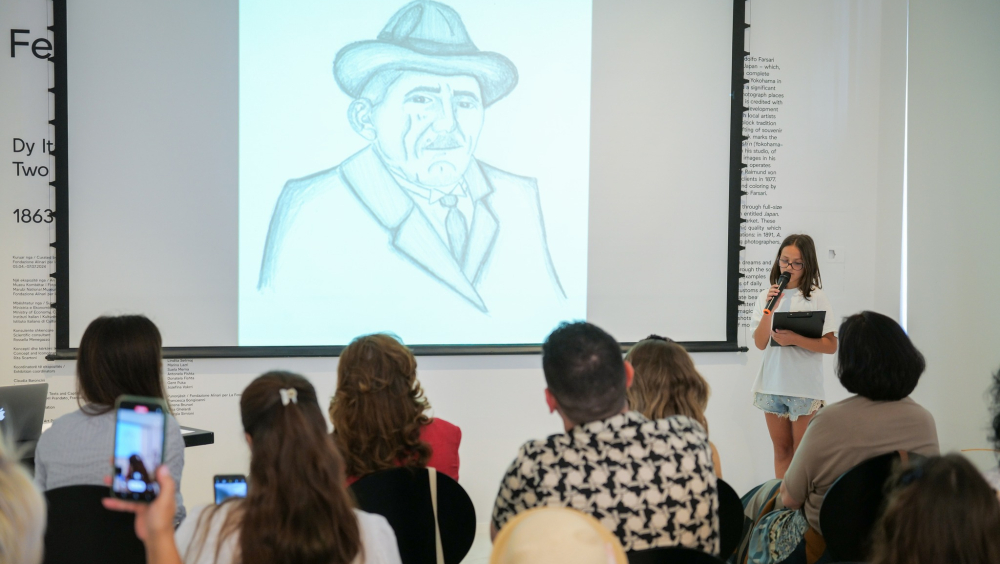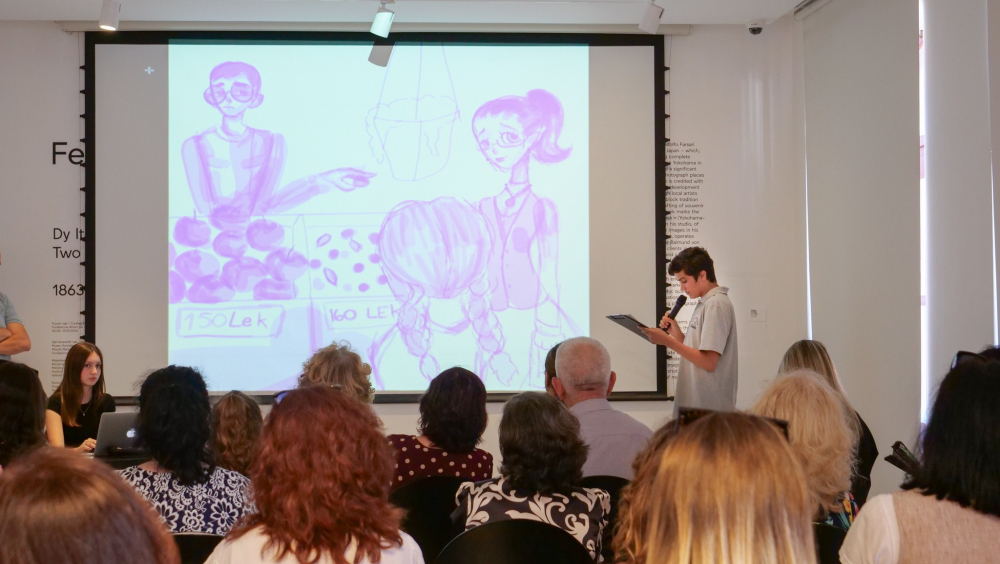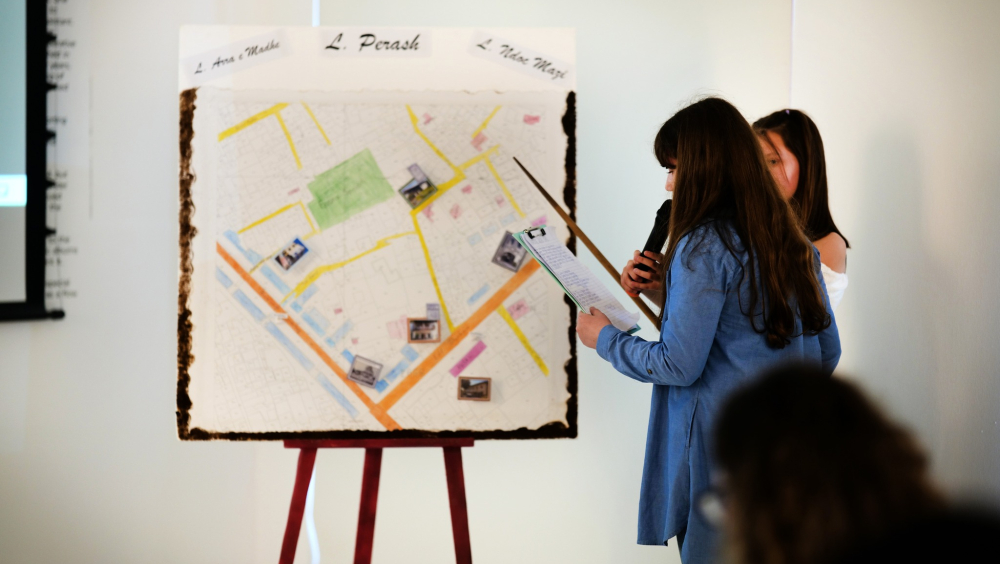Shkodra: Unveiling the Untold Tales of the City
In the past thirty years, Albania has experienced significant urban transformations that have resulted in the destruction, loss, or alteration of the function of heritage sites and the memories they embody. This has led to a complete alienation of urban spaces, with younger generations becoming disconnected from the historical and cultural memories of their cities.
From 2017 we have developed a project which investigates on the city’s untold tales. Through various mediums such as photography, video interviews, maps, and models, participants – students of secondary school - trace events, personalities, buildings, traditions, and crafts of the neighborhood they inhabit. They do so by gathering memories from parents, grandparents, neighbor and residents, thereby constructing a mosaic of histories linked to the urban memory of the space they live in daily.
During the 2024 school year, we completed the research on some several historical neighborhoods and would like to organize an exhibition showcasing a seven-year-long research project, alongside a book that aims to raise awareness among future generations about the importance of preserving cultural heritage. Images from local/national archives as well as the Marubi archive, will be used to illustrate their journey in order to draw attention back to the relevance of the archives.
“Shkodra's untold tales” is an educational project initiated in 2017 as a treasure hunt of lost cultural heritage organized by the Marubi Museum in Shkodra with primary and secondary school students.
The meeting point was the museum, where participants were explained the game and its rules. The group leader, chosen by the participants, was given a city map and an envelope with clues to solve in each location.
Upon reaching the first location and solving the first clue, on a tablet they were shown a picture of the site from the Marubi archive, where they could zoom in on all the details. They would solve the next clue and continue their walk in the city, moving on to each subsequent location, until they completed the game. At the end of the game, the first group to return to the museum was proclaimed the “Guardian of the City Heritage.”
During the long walk around the city, we noticed that most of the young participants were unaware of the city's heritage although the first editions of the program, in years 2017 and 2019, had a focus on important landmarks of the city historical center.
There are a number of factors that contribute to this, but among the main ones are a disregard for heritage preservation over the last thirty years, the disappearance of significant landmarks from urban memory, inadequate signage at heritage sites, the destruction of the city center due to urban speculation, and a lack of widespread community involvement in heritage projects.
For over one century (1865-1989), Marubi photographers have documented historical buildings, personalities and artifacts, contributing to the preservation of this heritage over the years. Their archive has been an incredible starting point for storytelling.
After reviewing the outcomes of the first two editions, it became clear that while the program had successfully highlighted the city's broader historical context, there was a need to delve deeper into the local narratives that were more personal and specific to the community.
The program involved students from public secondary schools - from 5th grade to 9th grade - who, assisted by teaching staff, family, and the community, get to know better the history that has shaped the identity of other neighborhood, often neglected, forgotten, left unrepresented, or simply resurface in memory.
During the 2 months duration of the work process, school teaching staff was assisted by the Marubi Museum staff, both in terms of guiding lines for working with the group of participants and also technical assistance in the final presentation that was organized in the museum.
Impressions from the participants:
"I pass by here every day and frequently have lunch with my parents, but I had no idea this building was Shkodra first municipality." (Referring to Shkodra first municipal building, now serving as a bar and restaurant.)
“What? This building is the one in the photo. Oh, it can’t be!! Incredible” (On Shkodra’s first public garden, now a bar and restaurant.)
"I'm surprised by the hidden stories of these places. I'm going to tell my friends at school and my parents at home about them.”
The project was paused during the pandemic and resumed in 2022. As we reached the 2024 school year, it culminated in a significant milestone: the completion of in-depth research on several neighborhoods, including historical, marginalized or newly established ones. The students provided a vivid picture of how neighborhoods have evolved, how traditions have been preserved or lost, and how the urban memory can be altered throughout the years.
To share the findings and insights of this seven-year-long research, we would like to organize an exhibition to showcase the findings and the stories gathered by the students. The exhibition would not only display the works of the participants but would also become a place where the public could engage with the past and reflect on the implications of urban change, offering a space for dialogue also for the communities.
Alongside the exhibition, we would like to release a book that would serve as a lasting record of the research and the stories uncovered over the years. Through photographs, paintings, sketches, testimonials, the book would highlight the personal and collective memories that form the foundation of urban identity.
The exhibition and book would also feature images from various archives - family, local and national collections - with a special regard to Marubi which holds the most important photographic documentation of Albania’s past.
The inclusion of archival materials would also serve to remind the public of the importance of preserving such resources. As cities continue to grow and change, the need to safeguard historical documents, photographs, and records becomes ever more pressing. The exhibition would draw attention to the vulnerability of these archives and the urgent need to protect them, especially in a time when digitalization and modernization often lead to the neglect of physical records.
To conclude, the exhibition and the book represent a hopeful future—a future where young people are not only aware of their cultural heritage but are also actively involved in its preservation. Through the stories they uncover, the memories they collect, and the archives they safeguard, they are helping to ensure that the past is not lost but continues to shape the cities of tomorrow.
This educational initiative represents a unique European approach to integrating local heritage preservation with younger generations.
The project taps into a larger dialogue surrounding cultural heritage preservation, which is an essential part of Europe’s identity. It is aligned with initiatives across Europe that strive to empower communities, particularly younger generations, to connect with their cultural roots and contribute to safeguarding their shared history.
Furthermore, the project addresses the issue of urban memory, a challenge faced by many European cities experiencing rapid transformation. "Shkodra’s Untold Tales" aims to reconnect young people with their city’s history and build a foundation for a sustainable heritage conservation approach, much like other European projects focused on community-based heritage management. It calls attention to the need for education in preserving local identities while engaging with the historical changes in urban spaces.
By combining storytelling, archival research and community involvement, the project aligns with European efforts to make heritage preservation more accessible, ensuring that cultural memories are not only preserved but also actively valued in a contemporary context.




